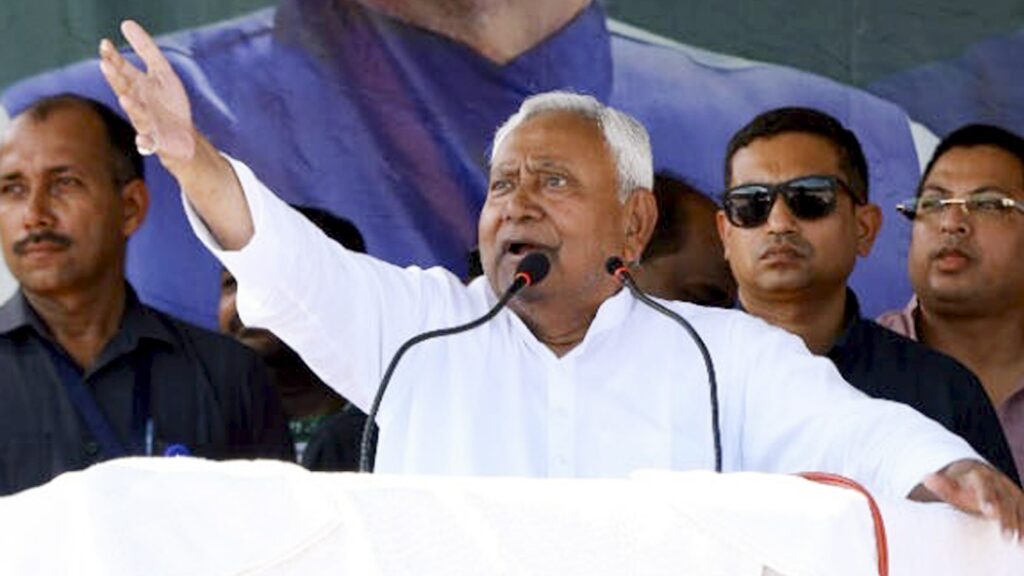While caste has been seen as central to politics in Bihar over decades now, a trend is visible as one travels the state. Many castes act as individual entities rather than as sub-groups of wider categories, and have their own leaders. The Kushwahas, the Mallahs, and the Manjhis are cases in point, apart from the older example of Yadavs.
However, there is one exception to this trend – Chief Minister Nitish Kumar, who has over the last two decades grown from a Kurmi leader to one who has successfully woven a coalition of castes around his persona. Even in the twilight of his politics, his combination is not just alive but still highly committed to him.
So in a state where the RJD’s Tejashwi Yadav is seen as a leader of the Yadavs, the LJP (RV)’s Chirag Paswan that of the Dusadhs, and the BJP’s Giriraj Singh and Samrat Choudhary of the Bhumihars and Kushwahas, respectively, Nitish’s appeal is beyond his Kurmi community.
This is significant as, otherwise, the Kurmi leader starts from a big disadvantage on the caste front. The Kurmis are less than 3% of the population, compared to the RJD’s base for example of Muslims and Yadavs, who together make up 31% of the population.
As one drives from Patna towards Seemanchal in the north-east of Bihar – with pitstops at Sikandara, Jamui and Katihar – the solid backward vote that Nitish has carved out for himself over the last two decades in the CM’s chair seems to be largely loyal to him still. Even Nitish’s health concerns, rather than being a deterrent, appear to have fortified the fondness for the leader, who is seen as contesting his last election.
“Jo humko sadak diya, bijli diya, suraksha diya, usko nahin vote denge to kise denge (The one who gave us roads, electricity and security, if we don’t vote for him, who will we vote for)?” says Jamadar Kumar, an EBC Dhanuk in Gangti village in Barhbigha constituency, which voted in the first phase on November 6.
Others around him, belonging to Dhanuk, as well as Paswan and Manjhi communities among Dalits, nod in approval. While the Dhanuks are part of Nitish’s EBC net, the Paswans and Manjhis are with the NDA largely because their leaders Chirag and Jitan Ram Manjhi, respectively, are part of the alliance.
What is making the fight tough for the NDA in Barhbigha is the presence of sitting JD(U) MLA Sudarshan Kumar, a Bhumihar, in the fray as an Independent, after being denied the party ticket. He is expected to dip into JD(U) Bhumihar candidate Kumar Pushpanjay’s votes, thus giving the Congress’s Bhumihar candidate Trishul Dhari Singh a chance to pull off a win.
Amid a traffic jam at Kusaila in Katihar districts due to political rallies Friday evening, Shrikant Mandal – who belongs to the EBC Mandal group – says: “For what he has done, we will vote for Nitish Kumar till he is alive. We don’t care about the local candidate of the JD(U) or NDA. We are with Nitish Babu.”
Another person from the same community nods: “Most Mandals of my village are with Nitish Babu.”
As CM, Nitish introduced several measures to consolidate his hold on the EBCs. In 2006, his Cabinet approved 20% reservation for EBCs in district boards, panchayat samitis, and gram panchayats. In 2010, he announced a new entrepreneurship scheme for the EBCs, wherein eligible members received state assistance of Rs 10 lakh to set up small businesses. And he was also behind the Bihar caste survey of 2023 which showed the EBCs at 36% of the population.
There are some signs of Nitish fatigue among some Kahars, or Chandravanshis, in Jamui. Deepak Kumar, a Kahar who owns three e-rickshaws, complains that the police lathicharged Bihar Public Service Commission job candidates in Patna earlier this year, adding that the people are looking to bring RJD leader Tejashwi Yadav to power.
In Jamui, the RJD may get the votes of not only the Muslims and Yadavs but others, giving its Shamshad Alam an advantage over Shreyasi Singh of the BJP. Singh, a Rajput, is the daughter of late Union minister Digvijay Singh, who hailed from an aristocratic family of Banka.

